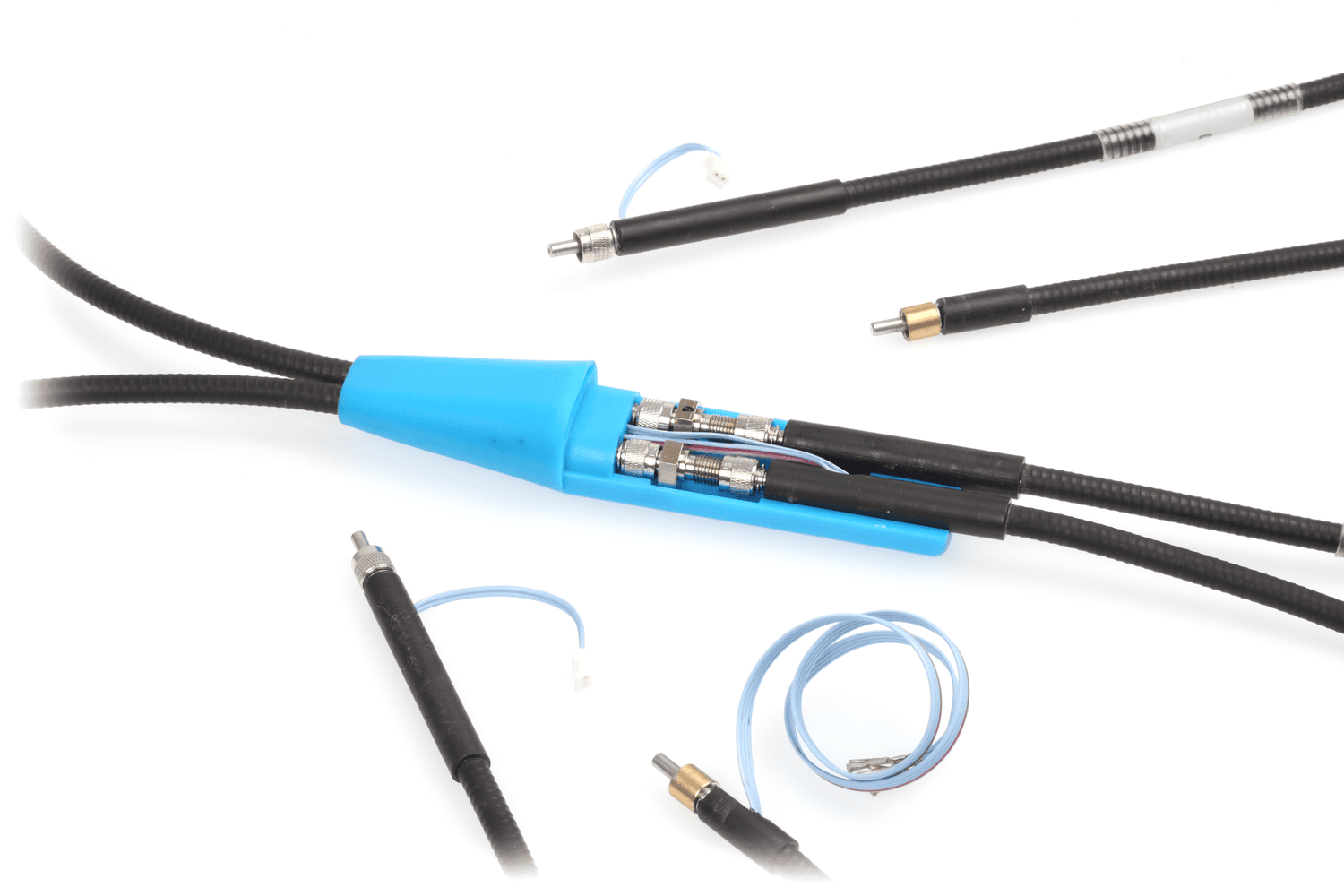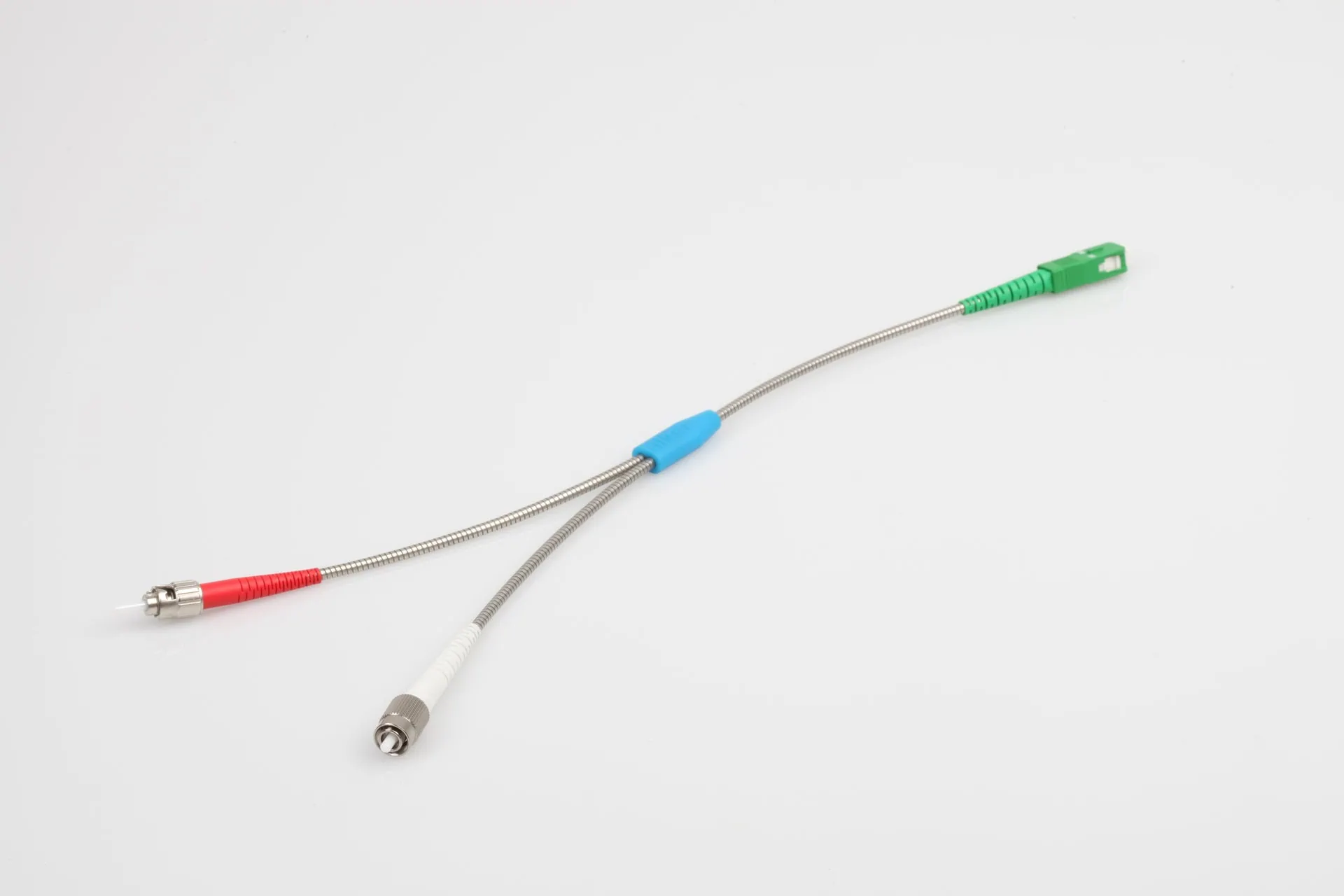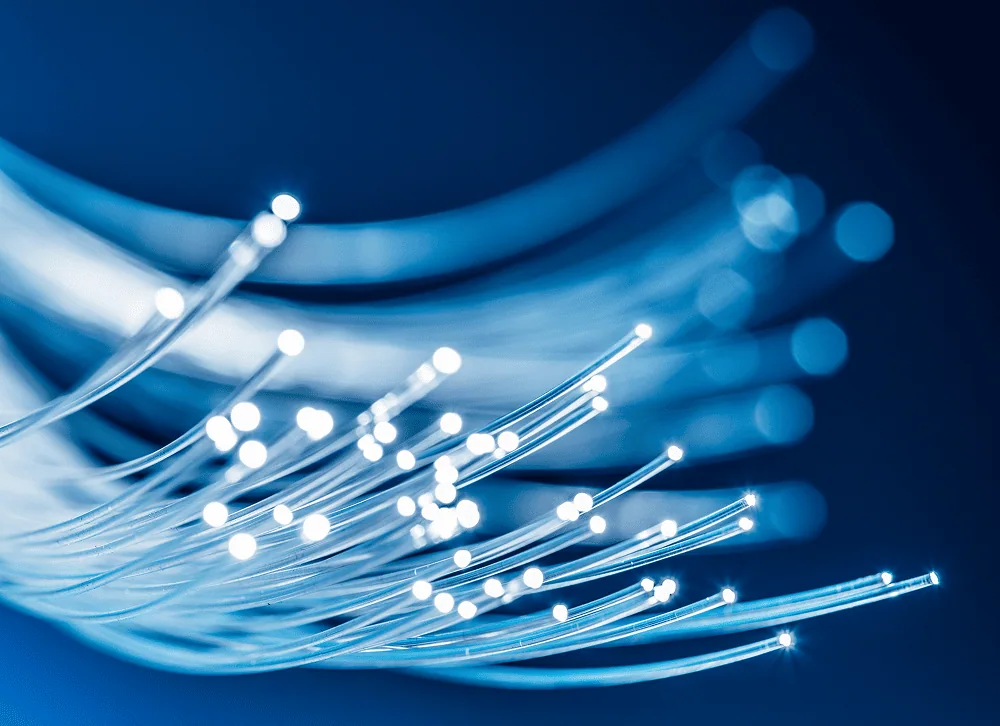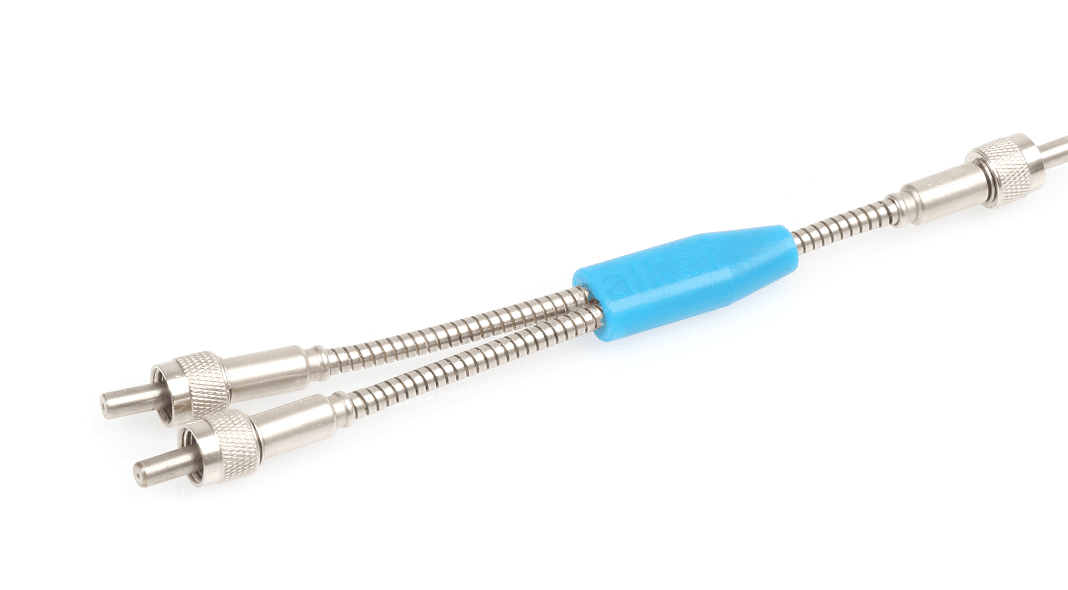Bifurcated & Trifurcated Assemblies
Bespoke fibre optic solutions built around your engineering challenges

Home » Manufacture » Bifurcated & Trifurcated Assemblies

Bifurcated assemblies
A bifurcated optical assembly refers to a number of fibre optic cables within a bundle that split or combine light signals – they can route a single light source into two paths or combine light from two sources into a single detector.
Typically, they have two fibres which are terminated within an individual connector at one end, converging into two single fibres at the other end (or vice versa).
Trifurcated assemblies
Trifurcated assemblies consist of two or three fibres within a bundle with a connector at one end, separating into two or three legs at the other end.
Trifurcated assembly fibres can be the same or different types, depending on the application. This principle can produce more complex, multichannel fibre optic harnesses.
For example, we can provide custom ferrule holed profiles, laser cut to exacting tolerances to accommodate multiple, different sized fibres within a connector. These can also be oriented and positioned to a keyway or custom orientation if required.

Applications

Medical imaging
Bifurcated fibres can be used to deliver light for imaging or therapeutic purposes.

Spectroscopy
They are commonly used in spectrometers to route light from a single source to multiple detectors or to split light from a source to multiple parts.

Optical sensing
They can be used to split or combine light signals for various sensing applications.

Bespoke solutions for your challenges
Bifurcated fibre assemblies can be customised to meet specific application requirements, including fibre type, core size, channel count and end face configuration within a range of connector types.
Fibre types
- UV-Visible bifurcated fibres: These transmit efficiently in the ultraviolet and visible light range (typically 300-1100 nm).
- Visible-NIR bifurcated fibres: These transmit efficiently in the visible and near-infrared light range (typically 400-2100 nm).
Key features
- Core size: Common core sizes include 50, 100, 200 and 400µm reaching 900um diameter
- Connector type: SMA 905, FC, ST, SC or custom connectors.
- Numerical Aperture (NA): The NA defines the angle of the light cone exiting the fibre.
The Challenge
Our team was challenged to develop a system that could measure up-welling (solar irradiance) and down-welling (the target Earth surface) simultaneously and in two different spectral regions using two different spectrometers: one for the spectral region where the induced chlorophyll fluorescence estimation is possible, and one across the wider near-infrared region.
The Solution
The team engineered a double bifurcated fibre optic assembly routing light from two different sources to two different spectrometers configured for different wavelength ranges (UV/VIS and VIS/NIR).
This assembly has two fibres side by side in each of it’s two input legs. Both input legs hold fibres of different types: f1 and f2 (f1f2, f1f2). In the junction/central block they cross over into two legs each containing side by side fibres of the same type, f1f1 and f2f2. The legs are armoured and water-resistant.
The four legs have a fitted IP68 gland. A 4 Ribbon electrical cable in one input leg splits into two ribbon cables in each one of the output legs. The input legs are keyed for alignment (by special construction/design of the connector ferrule).